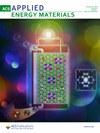用于非接触式溶液检测的微波驱动机器人传感器
IF 5.4
3区 材料科学
Q2 CHEMISTRY, PHYSICAL
引用次数: 0
摘要
基于微型机器人实现特定目标检测已引起广泛关注。本文首次提出了一种基于非接触式微波控制和检测的机器人传感器方案,用于溶液检测。机器人的关键部件是形状记忆合金(SMA)螺旋弹簧和单极天线,由三维打印结构支撑。首先,微波发生器产生的 2.45 GHz 电磁波被发射到单极天线。然后,电磁能被转化为焦耳热,从而推动机器人传感器向感应位置移动。接下来,单极天线充当传感标签,喇叭天线充当接收器,检测甲醇和丙酮溶液,灵敏度分别为 0.208 dB/% 和 0.187 dB/%。检测不需要介质,而且及时,甲醇和丙酮的检测范围为 5 %-25 %。机器人传感器的移动距离可达 10 厘米。通过增加微波发生器的输出功率,机器人的运动范围可以扩大,这为非接触式机器人传感器的驱动和检测提供了一个潜在的思路。本文章由计算机程序翻译,如有差异,请以英文原文为准。
Microwave-actuated robot sensor for non-contact solution detection
The realization of specific target detection based on micro-robots has garnered broad interest. It generally requires separate systems for actuation and sensing, and this paper presents for the first time a robot sensor scheme based on non-contact microwave control and detection for solution sensing. The key components of the robot are a shape memory alloy (SMA) coil spring and a monopole antenna, supported by a structure fabricated through 3D printing. First, electromagnetic waves at 2.45 GHz generated by the microwave generator are emitted to the monopole antenna. The electromagnetic energy is then converted into Joule heating, which drive the robot sensor toward the sensing position. Next, the monopole antenna acts as the sensing tag, while the horn antenna as the receiver, detecting methanol and acetone solutions with the sensitivity of 0.208 dB/% and 0.187 dB/%, respectively. The detection is mediator-free and in-time, with a range of 5 %-25 % for both methanol and acetone. The robot sensor can traverse up to 10 cm. By increasing the microwave generator’s output power, the robot's range of motion can be extended, offering a potential idea for non-contact robot sensor drive and detection.
求助全文
通过发布文献求助,成功后即可免费获取论文全文。
去求助
来源期刊

ACS Applied Energy Materials
Materials Science-Materials Chemistry
CiteScore
10.30
自引率
6.20%
发文量
1368
期刊介绍:
ACS Applied Energy Materials is an interdisciplinary journal publishing original research covering all aspects of materials, engineering, chemistry, physics and biology relevant to energy conversion and storage. The journal is devoted to reports of new and original experimental and theoretical research of an applied nature that integrate knowledge in the areas of materials, engineering, physics, bioscience, and chemistry into important energy applications.
 求助内容:
求助内容: 应助结果提醒方式:
应助结果提醒方式:


